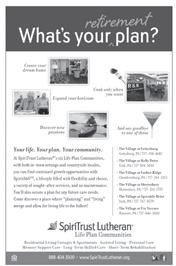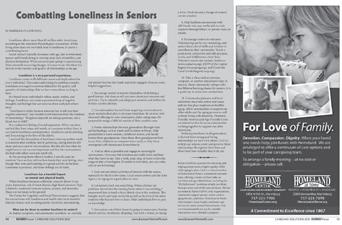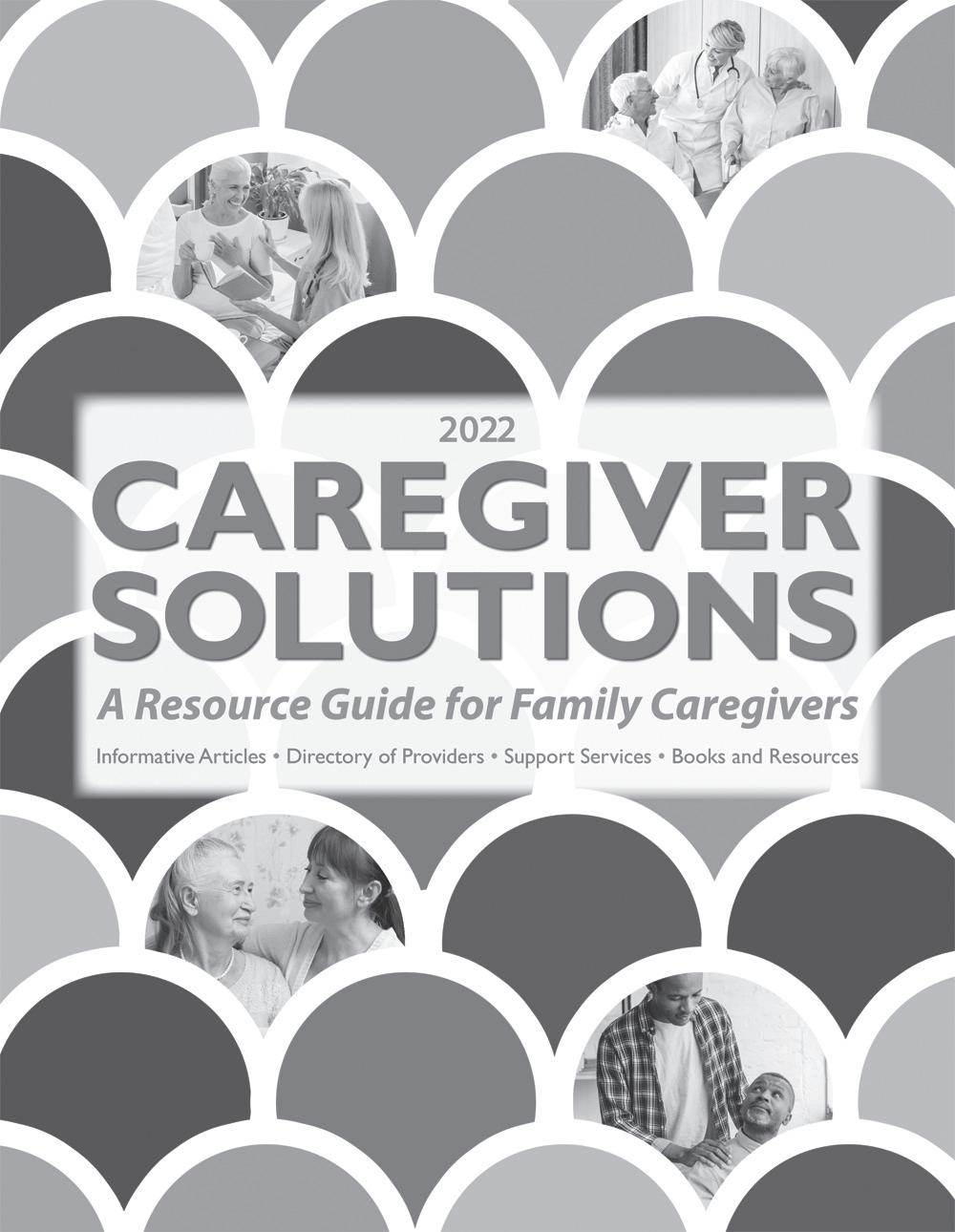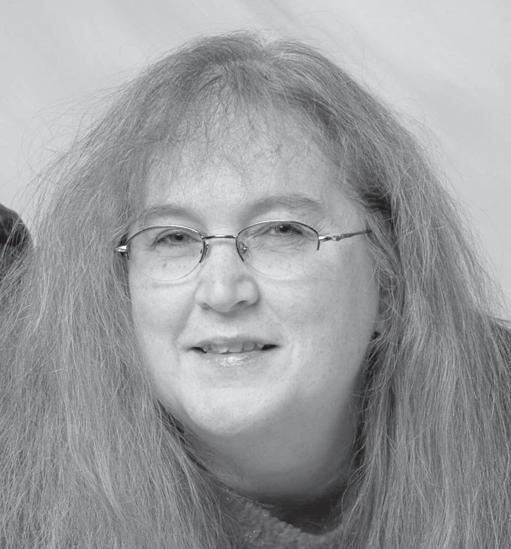

Never miss an
Physical Activity May Protect Your Brain as You Age
By Leigh Beeson
We all know we should exercise and eat healthy. But doing that isn’t just good for maintaining your figure as you age.

New research from the University of Georgia shows that physical activity could help protect your cognitive abilities as you age. And it doesn’t have to be intense exercise to make an impact.
New research from the University of Georgia shows every extra step counts when it comes to protecting the brain from the harmful effects of aging.
“This finding isn’t saying, ‘If you’re older, you need to go out there and start running marathons,’” said Marissa Gogniat, lead author of the study and a recent doctoral graduate in psychology from the Franklin College of Arts and Sciences.
“This is saying if you get more steps, if you’re moving around your environment a little bit more, that can be helpful to your brain health and keep you more independent as you age.”
Exercise Improves Brain Function
Published in Sport Sciences for Health, the study followed 51 older adults, tracking their physical activity and fitness measurements. The participants performed tests specifically designed to measure cognitive functioning and underwent MRIs to assess brain functioning.
They also wore a device that measured the intensity of the wearer’s physical activity, number of steps taken, and distance covered. The researchers assessed fitness through a six-minute walking test, during which participants walked as quickly as they could to cover the most distance possible within the time limit.
“We’ve always been told it’s good to exercise, but I think this is some evidence that exercise can actually change your brain,” Gogniat said. “And that impacts the way you’re able to function in your daily life.”
Brain Networks Improve with Physical Activity
The brain is made up of a bunch of distinct networks. Those networks are in constant communication, sending information to each other.
But different parts of the brain are active at different times. The network that is active when the body is at rest, for example, flips off when a person starts trying to complete a task. At that time, another network kicks on.
While one of these networks is active, the other should be shut off. If it’s not, that’s a sign that a person’s brain
isn’t
functioning as well as it should be.
These networks are the key to being able to perform basic tasks in daily life, such as remembering important information and exhibiting self-control. But as people age, these tasks often become more difficult.
This study was the first to examine how these networks interact with physical activity and fitness to impact how the brain functions.
“This paper is exciting because it gives us some evidence that when people whose brain networks aren’t functioning optimally engage in physical activity, we see improvement in their executive function and their independence,” Gogniat said. “We’re not saying you need to radically change your life.


“Maybe just take the stairs on the way to work. Stand up and walk around a little bit more. That’s where you get the most bang for your buck, not crazy, highintensity exercise.”
The study was co-authored by Talia Robinson, Kharine Jean, and Stephen Miller, from UGA’s Department of Psychology.

Celebrate Reading and Help Your Grandchild Develop a Love for It



 By Kimberly Blaker
By Kimberly Blaker
What better day to celebrate
Read Across America Day with your grandchild than on the birthday of the beloved Dr. Seuss, March 2?
It’s the perfect kickoff to March’s National March Into Literacy Month, both of which are dedicated to the promotion of reading and literacy.
Read Across America Day was first introduced by the National Education Association in 1998. The NEA’s goal for the celebration is to motivate kids to become lifelong readers, thereby improving student performance.
Every year, schools, public libraries, and other organizations celebrate this day by holding reading events for kids.
Ways Grandparents Can Promote Reading


There are many ways to promote a love of reading and encourage grandkids to read not only during this celebration, but also year-round.
Read to kids. Begin reading to your grandchild very early. The NEA suggests infancy is an excellent time to start.
As your grandchild grows, encourage their participation in reading the story with or to you. Although your grandchild may not be ready to read, kids often memorize some of their favorite books or pages. Making children an active participant helps develop their love for reading.
Visit the library. Think of the library as a big, free, educational toy store. Help your grandchild choose some books, but also encourage him or her to select some on their own. Kids can take home audiobooks, video games, videos, and music CDs too.
Help your grandchild build a collection. One commonality among reading lovers is how much they enjoy having their own book collection. Help your grandchild grow a personal library of their favorite series, author, or genre. Then assign a special shelf to store and display the collection.

Play word games. Look for board, computer, or phone games that help kids develop their reading and spelling skills and vocabulary.



Sign up for Goodreads. Through this Android and iOS app, kids can track both the books they’ve read and those they want to read. They can also check out what their friends are reading.

Subscribe your grandchild to a magazine. There’s a host of kids’ magazines on the market and something for every age group. It will give your grandchild something to look forward to each month and build enthusiasm for reading.
Read in front of your grandkids. Show them that reading isn’t just a school requirement, but rather a lifelong activity. Let them see you reading both to learn and for pleasure.
Form a kids book club. If your grandchild is interested in it, this is a great way to build excitement for reading. You’ll want to find kids who are all at about the same reading level. You’ll then need to decide where to hold the weekly or monthly meetings, which could be at your house, or perhaps your school or public library will provide you space. You might be able to advertise it through your grandchild’s school or public library, as well.
Set up a reading room or corner. Find a quiet, distraction-free area in your home to designate as the reading area. It should have comfy seating, perhaps even a beanbag chair or two, pillows, blankets, and good lighting.
Kimberly Blaker is a freelance writer. She also owns an online store, Sage Rare & Collectible Books, specializing in out-of-print, scarce, signed, and first editions; fine bindings; ephemera; and more at sagerarebooks.com
CoRPoRATE offICE
P.O. Box 8049, Lancaster, PA 17604
Phone (717) 285-1350
(610) 675-6240
Fax (717) 285-1360

Email address: info@onlinepub.com
Website address: www.onlinepub.com
PRESIDENT AND PUBLISHER
Donna K. Anderson
EDIToRIAL
Vice President and Managing Editor
Christianne Rupp
Editor, 50plus Publications


Megan Joyce
ART DEPARTMENT
Project Coordinator
Lauren Phillips
BUSINESS DEVELoPMENT
Senior Marketing Consultant

Joshua Binkley
Events Manager
Kimberly Shaffer
ADMINISTRATIoN
Business Manager
Elizabeth Duvall Member of
By Gabriele AmersbachCover Story
Pretty Tough
material and motor-carrier safety regulations.
Awards
50 plus Life is published by On-Line Publishers, Inc. and is distributed monthly among senior centers, retirement communities, banks, grocers, libraries and other outlets serving the senior community.
On-Line Publishers, Inc. will not knowingly accept or publish advertising which may be fraudulent or misleading in nature.


Views expressed in opinion stories, contributions, articles and letters are not necessarily the views of the publisher. The appearance of advertisements for products or services does not constitute an endorsement of the particular product or service. The publisher will not be responsible for mistakes in advertisements unless notified within five days of publication. On-Line Publishers, Inc. reserves the right to revise or reject any and all advertising. No part of this publication may be reproduced or reprinted without permission of On-Line Publishers, Inc.
We will not knowingly publish any advertisement or information not in compliance with the Federal Fair Housing Act, Pennsylvania State laws or other local laws.
It’s hard to imagine a life that spans a tough job as special agent enforcing safety regulations for trucks coming through the Mexican border; succeeding as a finalist in a national beauty competition; and handing out hugs and stuffed animals to strangers in the park.
Maria Frisby has never hesitated to explore her varied passions with grit, resolve — and love.
She began life in Brooklyn, New York. At age 7, Frisby moved with her mother and brothers to Middletown, Pennsylvania, a charming, low-key small town, with the dubious distinction of close proximity to the now-defunct Three Mile Island nuclear reactor.
“I always wanted to be somebody and to reach out to others,” says Frisby.
Her varied career has permitted her to do both. She enjoyed life in Middletown and took jazz, tap, and ballet lessons as a child, early skills that allowed her to shine during her years of pageant competitions.
Frisby began participating in pageants in 1997, representing Middletown in the Mrs. Pennsylvania America Pageant. At age 39, she was selected as Ms. Pennsylvania 2004, part of the United States Beauties pageant system, and won second runnerup in the national competition.
Her desire to compete despite a severe bout of acute pancreatitis is just one example of the grit that carried her through many life adventures.
“I had competed in a Ms. Pennsylvania pageant with the pain of acute pancreatitis and was eventually hospitalized — I didn’t want to let down my sponsors,” says Frisby.
During another hospitalization, she was in and out of consciousness in the ICU and relied on her faith and her prayer circle to survive. Nurses considered her a “walking miracle,” says Frisby.
“You don’t often get up the same night, healed after sepsis and a temperature of 108 degrees.”
Recognizing her grit and faith despite adversity, her fellow pageant director and staff voted her an “Inspiration” award, an accolade she took to heart.
‘Sometimes you have to be tough’
The same determination that carried her through a potentially life-threatening illness had served her well when she completed a B.S. degree in criminal justice at Penn State University and moved to Arizona in 1990.
There she worked with the Arizona Department of Public Safety (the state police) and assisted other law enforcement agencies to screen incoming truck drivers from Mexico and enforce hazardous-
“I had to interrogate people and do investigations,” says Frisby. “I even did strike forces with the California Highway Patrol and Sacramento State Police Department. Sometimes you have to be tough.”
In 1994, Frisby moved back to Middletown and started working with children from a local community.
“For kids from at-risk families without good role models, it’s easy to get into bad things,” she says.
Frisby wanted the children to develop empathy for the homeless, the disabled, and the elderly and learn to love everyone. Together they practiced gospel songs.
As the Angels of Mercy, the child chorus and Frisby went to hospitals, nursing homes, and homeless centers, where they sang and gave out stuffed animals and inspirational cards.
‘People need to hear they are loved’
For the last 20 years, she has continued her efforts to spread cheer and goodwill with stuffed animals, roses, cards, and hugs.
“It is really important to provide comfort and tell people they are loved, they are cared for, and they are accepted — no matter what race, age, nationality, or skin color,” Frisby explains.
She and a group of “Angels” continue their mission in local nursing homes, although Frisby often spreads her message of love by herself, when she passes through a park, a parking lot, or even a restaurant.
“In the time we’re living in now, there is so much division,” she says. “People need to hear they are loved, by me and by God — a hug often makes people’s day.”
The recent quarantines and social distancing were especially hard for Frisby.
“COVID broke my heart,” she says. “It slowed me down dramatically.”
Now Frisby is thrilled be able to hug again.
“I am motivated by God to do the things Christ would do — to spread love.”
‘We thought we would die that night’: Publicizing the impact of TMI
Her commitment to her local community is also present in her support of efforts to publicize the devastating impact of the Three Mile Island partial meltdown on March 28, 1979.
“My family and I are survivors of the United States’ worst commercial nuclear accident,” she explains. “We lived within the 2- to 3-mile radius that was most affected. Thousands of families left the area, but my family and I could not leave the
area due to car problems. We thought that we would die that night.”
As a result of the radioactive releases to prevent a total core meltdown, Frisby and her family all experienced the “strong metallic taste that people in Chernobyl and Fukushima had,” she says.
Researchers do acknowledge that after the accident, residents near the Middletown plant began to report nausea, vomiting, hair loss, and skin rashes — signs of radiation exposure.

Frisby notes that while researchers initially refuted claims of increased cancer risk, as more time passes, some researchers have documented the increased risk of some cancers in communities close to the nuclear reactor.


While controversies over the amount of radiation released — and its ongoing impact on health — continue, Maria Frisby joins many local people who provide stark anecdotal evidence that their families definitely saw a rise in cancer.

“Many people in my brother’s and my high school classes died of cancer — including thyroid, colon, lung, leukemia, lymphoma, and breast cancers,” says Frisby. “I know so many people, including myself, with a host of health problems.”
Many of Frisby’s own family have developed, and in some cases, succumbed to a wide range of cancers, while others have developed longterm thyroid disorders
Frisby notes that Mary Stamos, another TMI survivor, documented another TMI impact: the many mutated plants and animals she found in the area around TMI in the ’80s, including plants with abnormally huge leaves, roses with flowers growing in the middle of the stem, and daddy long leg spiders with four legs rather than eight.

There was even a two-headed calf born on a farm in New Cumberland. The documentation of the nuclear accident-related oddities is now found at the Smithsonian Institute.
As a TMI activist, Frisby is part of the East Coast publicity team for two TV programs based on the 1979 nuclear accident: Plutonium Skies (a fivepart dramatic TV series) and Powerhouse (a five-part docu-drama series). Both series are written, produced, and directed by Jill Murphy Long of JML Films.



Frisby shares her story of survival at film-launch parties and takes photographs and videos of other survivors and local businesses that were
around during the nuclear incident. She was also interviewed for an upcoming TV documentary about the TMI partial meltdown: Radioactive: The Women of Three Mile Island
In addition, Frisby has set up a Facebook group for people who were impacted by TMI called, “Surviving Another Day: The Three Mile Island Citizens Survivor Group.”



Maria Frisby and her family still live in Middletown, despite its dark history. On a sunny afternoon or even when it’s overcast, you may find her walking through a local park or restaurant to reach out with love to the sick, the disabled, the homeless, and anyone who is willing to smile back.

She’ll tell you that all of our divisions and differences don’t matter. You are loved.
on the cover:

from left, Maria frisby participating in a Harrisburg-area parade as Ms. Pennsylvania 2004; frisby distributing gifts as part of her Angels of Mercy initiative.
Three Mile Island Nuclear Generating Station closed since the accident in 1979. Credit: “Three Mile Island Nuclear Generating Station as of february 2014” by Z22, licensed under CC BY-SA 3.0.



“Three Mile Island accident sign” by Z22, licensed under CC BY-SA 3.0.
sign in Middletown, Pa., dedicated in 1999, describing the Three Mile Island accident, the evacuation of the residents in the area, and the impacts to the nuclear power industry.
Savvy Senior How to Reduce Your Medical Bills
Jim MillerDear Savvy Senior,
What tips do you recommend to Medicare beneficiaries dealing with hefty medical bills? My husband recently had open heart surgery and is recovering slowly, but the medical bills are coming in fast and furious, and they’re putting us in medical debt.
– Struggling in SpringfieldDear Struggling,
I’m sorry to hear about your billing struggles, but medical debt has unfortunately become a chronic problem in this country.
According to U.S. Census data, 19% of American households carry medical debt, including 10% of households headed by someone 65 or older. Even seniors on Medicare can easily get snagged in a web of complicated billing and coverage problems.

To help you slash your medical bills, here are some tips recommended by healthcare experts that you should try.
Double check your bills: Almost half of all medical bills contain at least one error, including duplicate charges or charges for services you never received.
Are you getting your share of the SILVER ECONOMY?
Which buyers make up the Silver Economy?
• 962 million men and women over the age of 60
• A group with 11 times more wealth than millennials
• Persons with a life expectancy in the U.S. is about 78.87 years
• Persons who prefer in-person contact when possible
• A group that wants to age at home as long as reasonable

Why do you want to reach these buyers?
• They are free of many economic burdens
• They like to take care of themselves, be active, eat well, be fashionable, and have fun
• They have more free time
• They are looking for products and services to help them age well
What sectors are on the rise?
The not-so-obvious:
The obvious:
• Home improvements/renovations
• Tourism and leisure activities tailored for them
• Caregiver solutions

• Financial products geared for seniors
• Retirement living
• Security technology – mobile apps, sensors, wearable devices, smart clothing, etc.
• Pet care – pet sitting, walking, grooming, food, accessories, etc.
• Gardening/lawn services combined with snow removal
• Mobile esthetic and concierge services – hairstylist, manicurist, massage, facials
• Personal services – running errands, shopping
What are you waiting for?
51% of people aged 52-70 spend fewer than 11 hours a week online. While businesses need an online presence, print adds power to a media campaign. Most boomers and seniors are open to and love classic media.
50plus Life—Covering Chester, Cumberland, Dauphin, Lancaster, Lebanon, and York counties—is an excellent venue!
Call to learn how we can help you reach our 150,000+ readers of 50plus Life! 717.285.1350 or email info@onlinepub.com
If you’re facing a high bill and are on the hook for some portion of it, request itemized invoices from the hospital and other providers that detail everything you were charged for, and go through them line by line.
If you see something you don’t understand or find fishy, contact the provider for an explanation or a correction.
Wait for your EOB: Doctors’ offices and hospitals may mail initial bills to you before they even submit them to your health insurer.
So, hold off on any payment until you receive an explanation of benefits from your provider — Medicare, supplemental Medicare, Medicare Advantage, or private insurer. This will show what you owe after your insurance has paid its portion.
If your EOB shows that your insurer is refusing to pay for services you think should be covered, call them to see whether it’s a correctable mistake, such as a coding error for a certain test or treatment.
If it’s truly a denial of coverage, you may need to file an appeal. For details on how to file a Medicare appeal, see Medicare.gov/claims-appeals/how-do-i-filean-appeal.
Ask for a discount: Call the hospital’s accounting office or the billing staff at your doctor’s practice and ask if they can reduce your bill. You’d be surprised how often this works.
Or, if you have the funds to pay the entire bill, ask the hospital or provider for a “prompt pay” discount, which may save you 15% or more.
If it’s best for you to pay your bills over time, ask the billing office to set up a no-interest payment plan for you. It’s in the provider’s interest to work with you to obtain payment.
You can also call the hospital where your husband had his surgery and ask a billing specialist if the facility offers financial assistance.
According to the American Hospital Association, about half of U.S. hospitals are nonprofit. This means they are required to offer free or discounted services in some instances.
This is usually reserved for low- to moderate-income patients who have limited or no health insurance, but requirements vary from hospital to hospital.
Get help: If you’ve gotten nowhere on your own, contact the Patient Advocate Foundation at patientadvocate.org or (800) 532-5274, whose resources can help you understand and negotiate your medical bills, free of charge.
Or consider hiring a medical billing professional to negotiate for you, but be aware that these services can cost upward of $100 an hour.
You can find potential candidates through the Alliance of Professional Health Advocates (advoconnection.com). Be sure to choose someone who is credentialed by the Patient Advocate Certification Board.
Jim Miller is a contributor to the NBC Today show and author of The Savvy Senior book.

Puzzle Page













Know Your Kidneys: How to Prevent and Manage Kidney Disease
You may not think much about your kidneys unless there’s a problem, but they play a vital role in your health.
Your kidneys continually filter your blood to remove extra fluid and waste, which is released from the body as urine. They also help control blood pressure and keep bones healthy.
Consider this information from Know Your Kidneys — an education campaign from the American Kidney Fund, Boehringer Ingelheim, and Otsuka — to understand how your kidneys work, how to protect them, and how to help prevent kidney disease, which has no cure.
What is Kidney Disease?
Kidney disease means your kidneys are permanently damaged and do not work as they should. This lets extra fluid and waste flow back into your bloodstream instead of leaving your body as urine.
March is National Kidney Month
An estimated 37 million Americans are living with kidney disease, and 1 in 3 adults is at risk for the disease, according to the American Kidney Fund. Kidney disease typically does not have any symptoms until the late stages, so most people do not know they have it.
Who is at Risk?
Kidney disease doesn’t discriminate; people of all backgrounds get it. However, multiple barriers contribute to inequity in kidney care, including systemic racial and ethnic biases, language and cultural differences, and where a person lives.

These barriers make it more likely for certain people’s kidney disease to progress to kidney failure — the last stage of kidney disease. For example, Black Americans make up just 13% of the population, but they are 3.4 times more likely than white Americans to progress to kidney failure.
Other risk factors include diabetes, high blood pressure, hereditary causes or having a family history of the disease, being over the age of 60, obesity, and smoking. Being tested for kidney disease if you are at risk can help detect early problems.
What Are the Symptoms?
In the later stages of kidney disease, you may have symptoms like foot swelling, nausea, and fatigue. Other potential symptoms include itching, muscle cramps, changes in urine output, loss of appetite, trouble catching your breath, and problems sleeping.
Regular blood and urine tests can help monitor your kidney health. Ask your doctor to check your kidney function, and if the tests reveal concerns, work together to create a plan.
What Are the Treatment Options?
There is no cure for kidney disease, but you can take actions and medicines to manage your condition and possibly help prevent the disease from progressing to kidney failure.
Depending on the specific cause of your kidney problems, your doctor may suggest controlling your blood sugar, blood pressure, and cholesterol; eating healthy; quitting smoking; and being more physically active and maintaining a healthy weight. Medicines can also help control kidney disease for people with diabetes.
If kidney disease progresses to kidney failure, dialysis or a kidney transplant is required to survive.
How to Advocate for Kidney Health
Dawn Edwards was just 23 when she developed kidney failure, reinforcing that kidney disease can affect anyone at any age. While Edwards juggles life with dialysis, she also regularly talks to newly diagnosed and high-risk patients.
“My advice is to learn as much as you can and have honest, frank discussions with your doctor,” Edwards said.
“Learn about your treatment options, including the side effects of medications, and lifestyle changes that can manage your diabetes and high blood pressure and ultimately slow or stop the progression of kidney disease.”
For more information, visit KidneyFund.org/KnowYourKidney s. (Family Features)
Pennsylvania’s Population Plummets by 40,000 in a Year
 By Anthony Hennen
By Anthony Hennen
The American population might be growing, but Pennsylvania remains a leading state for Americans to flee, rather than stay.
The commonwealth is one of 18 states to lose population in 2022, according to new data from the Census Bureau, and one of the worst performers. The data is confirmation of a long-running trend: Pennsylvania has a population problem, and the end isn’t yet in sight.
The latest census data shows the American population grew by 1.26 million (0.4%) since a year ago, with the primary growth being more than 1 million immigrants landing on American soil. Natural change (births minus deaths) added almost 250,000 Americans. Pennsylvania, however, is seeing little of that growth. It was second in
the nation (behind Florida) with the biggest natural decrease (more deaths than births) of 23,000 residents. Neighboring Ohio was third, with a 19,500-resident drop.
While Pennsylvania remains the fifth most populous state with just under 13 million people, it’s ranked fourth for the biggest one-year population decline. Since July 2021, the commonwealth has lost 40,000 people.
Some of the Keystone State’s woes reflect regional trends. While the South and the West have continued to grow in population and in economy, the Midwest and the Northeast keep losing population.
The Beauty in Nature Maple Sugaring

John Burroughs, farmer and famous naturalist in the 19th century, wrote, “Next week, or the week after, it may be time to begin plowing, and other sober work about the farm, but this week we will picnic among the maples, and our campfire shall be an incense to spring.”

Late February through March is the time of maple sugaring in northeastern North America, which is the original range of sugar maple trees.
During that time, many afternoons are warm, which expands cells in trees’ cambium layers, just under the bark. That swelling draws winter-stored, watery-looking sap up trees’ trunks, cell by cell, to fill those expanding cells. However, the cells contract during nightly cold, further squeezing the sap up, cell by cell.
Native Americans of America’s northeastern forests were the first people to make pure maple syrup, probably by accident. I like to think a group of American Indians camped where water wasn’t available to drink or cook in. But those people knew that by slashing maple and birch tree bark, they could collect the trees’ sap.
They put food into the sap in clay pots by the fire and let it all simmer for a while. They found the food to be sweeter when boiled in maple or birch tree sap. Then they might have boiled sap down by itself and discovered pure maple syrup, their only sweetener.
European pioneers had honey in Europe but knew nothing of maple syrup, even though there are maple and birch trees in Europe. They learned the process from Native people, and we have had pure maple syrup ever since. Whether maple syrup is made commercially or for home use, a few tools and procedures are needed. For home use, a hand drill can be used to drill a few small holes into each large tree to penetrate the cambium layer under the bark. Then a spile is tapped into each puncture to conduct the sap into a container.
Sap is regularly collected and poured into a boiling-down container. The boiling sap emits lots of steam, but the sugar stays in the cooking container. The sugar burns and becomes darker, and the liquid becomes thicker. Pure maple syrup is the resulting product.

Sugar maples have 2% sugar in their sap; other maples and birches have only 1%. About 40 gallons of sugar-maple sap boil down to 1 gallon of syrup. Lots of sap, time, and fuel go into making pure maple syrup, the reason it is expensive to buy. But refrigerated maple syrup keeps quite a while.
Pure maple syrup is another gift from nature and Native Americans, along with corn, tomatoes, potatoes, and pumpkins. Today all those products are big business.

Why newspapers?
84%
of Baby Boomers have taken action as a result of seeing an ad in a print newspaper in the past 30 days. 2


The History of Ordinary Things Ever Wonder about the Cigarette filter?

Evidence of smoking was first documented in 1556 in a report of an English sailor “emitting smoke from his nostrils.” French diplomat and scholar Jean Nicot (origin of the word nicotine) introduced tobacco to France in 1560.
In 1925, Hungarian inventor Boris Aivaz patented the process of making a cigarette filter from crepe paper. Its purpose was to filter the fine flakes of tobacco in the rolled cigarette that often flecked off on the tongue. This was objectionable to women who had begun to smoke. Companies added beauty tips, often made of cork, for the sake of, or sale
to, women. They promoted smoking to women as a sign of liberation and independence.
It wasn’t until the 1950s that research linked smoking with lung cancer. In response, American cigarette companies spent millions of dollars to engineer a filter to reduce the health hazards of smoking.

They developed synthetic fibers in cigarette mouthpieces, but these created new problems. In 1952, the Kent Micronite introduced a filter that sucked particles out of the smoke, but the Micronite held asbestos fibers that were far more dangerous than tobacco smoke.
Philip Morris promised that

glamorous — capitalizing on women’s liberation movements.
you know a good story when you hear it.
Think
you or someone you know would make
an interesting profile
story for 50 plus Life?

We are looking for central Pennsylvanians over age 50 who have a unique hobby, passion, or history of volunteer work, or who are a part of an interesting local club.


Ideal story candidates are willing to talk about themselves and to be photographed.

Your name: _______________________________________________________________
Your address: ____________________________________________________________________
Your phone: ________________________________________ Email:_____________________________________________

Nominee’s name (if not self): ____________________________________________________________________________
Nominee’s town of residence: ___________________________________________________________________________
Nominee’s phone: __________________________________ Email: _____________________________________________
Why they would make a great story: _____________________________________________________________________
Note: Please get your nominee’s permission before submitting them!
Please email story submissions to Megan Joyce, editor, at mjoyce@onlinepub.com or send via mail to 50plus Life, P.o. Box 8049, Lancaster, PA 17604.
1951 ad for Phillip Morris cigarettes portrays a woman who looks proud, confident,
an antifreeze chemical (diethylene glycol) in the mouthpiece would take “the fear out of smoking,” but the mouthpieces shed tiny fibers that could be inhaled into the lungs. The industry called it “fallout.” DuPont scientists experimented with Dacron, the same polyester that allowed for wrinkle-free pantsuits.
In 1953, a Reynolds Tobacco Company chemist, Claude Teague, invented a filter that could turn brown when exposed to smoke. It was introduced as Winston in 1954, the first successfully marketed filter cigarette.
It was followed in 1956 by Salem, the first filter-tipped menthol cigarette. The Belair menthol brand was launched nationally in 1960.
By the mid-60s, scientists realized that any material that effectively trapped particles also weakened the cigarette’s kick. The filter was designed to remove exactly what the smoker wanted from smoking.

Ultimately, the industry settled on filters being perceived by consumers as effective. They opted for the illusion that Teague’s filter was filtering (turning brown), despite the reality that filters do not make cigarettes any safer.
Filter cigarettes’ market share climbed from 0.5% in 1950 to more than 98% today. Filters are usually made from plastic cellulose acetate fiber, derived from bleached cotton or wood pulp treated with acetic acid and other chemicals.
Today filter ventilation is used to dilute the smoke. Ventilation holes vary in size and quantity, thus impacting the ease of inhaling smoke. Modifications in filter ventilation have created light and ultra-light cigarettes.
Other additives to filters include flavors (menthol), sweeteners, softeners (triacetin), flame retardants, breakable capsules releasing flavors on demand, and agents that will color the tobacco smoke.


On an environmental note, the cellulose acetate used in cigarette filters will eventually break down but never disappears. These plastic filters, containing toxic chemicals once smoked, are the most littered item in the world. They release their chemicals into the air, soil, and water and do not biodegrade for years.
Worldwide, every year, roughly 4.5 trillion cigarette butts are discarded, leading to over a billion pounds of toxic trash, according to American Nonsmokers’ Rights. Three-quarters of smokers report disposing of butts on the ground or out of a car window, making cigarette butts nearly 38% of all litter. Wow.

Doris Montag is a homespun historian and an exhibit curator who researches and displays historical collections of ordinary things, such as can openers, crochet, toy sewing machines, hand corn planters, powder compacts, egg cartons, and more. Contact or follow her on Facebook, HistoryofOrdinaryThings.

CANCER
Should People over Age 75 Be Screened for Colorectal Cancer?
By Elia Ben-AriSince the untimely death of 43-year-old Black Panther star Chadwick Boseman in 2020, the rapid rise in the rate of colorectal cancer among younger adults has been in the news. This increase played a key role in a revised recommendation by an independent U.S. advisory panel to start screening for colorectal cancer at age 45 instead of 50.
Screening for colorectal cancer, which can detect cancer and precancerous lesions before symptoms develop, has been shown to reduce deaths from the disease.
But while the U.S. Preventive Services Task Force updated its guidance to recommend screening for all adults aged 45-75, the panel concluded the “net benefit” of screening after age 75 is small and did not change its guidance for this age group.
However, a more recent study provides some evidence that screening for colorectal cancer appears to be beneficial for people beyond age 75 as well.
Although the study’s findings don’t contradict the advisory panel’s screening recommendations for older Americans — that is, that the decision should be made on a case-by-case basis — the researchers believe their results provide helpful information for physicians to use in discussing whether their older patients should get screened for colorectal cancer.

Because the task force suggests that decisions about screening people 76 to 85 years old be made selectively, “it’s been a bit of a gray area for physicians, and for [older] patients, to know what to do,” said Andrew Chan, M.D., M.P.H., a professor of medicine at Massachusetts General Hospital.
Chan co-led the study assessing the impact of colorectal cancer screening in more than 56,000 people aged 75 or older. His team found that the risk of dying from colorectal cancer was reduced by more than a third in people over age 75 who had been screened by colonoscopy or sigmoidoscopy.
Do you know a 50+ volunteer who gives selflessly to others?
Tell us what makes him or her so special and we will consider them for 50 plus Life’s Volunteer Spotlight!
Submissions should be 200 words or fewer and photos are encouraged. Email preferred to mjoyce@onlinepub.com or mail nominations to 50 plus Life, Volunteer Spotlight, P.O. Box 8049, Lancaster, PA 17604.
Time is a Priceless Gift
volunteer spotlight
Evidence Suggests Benefits of Screening beyond Age 75
Among more than 56,000 participants who reached age 75 during the study, the team identified 661 new cases of colorectal cancer and 323 deaths from the disease.
They then compared the rates of new colorectal cancer diagnoses and deaths from the disease among participants who reported having a screening colonoscopy or sigmoidoscopy after age 75 and those who did not undergo either test.

Screening after age 75 was linked with a 39% reduction in the incidence of colorectal cancer and a 40% decrease in the risk of death from the disease. The researchers found similar reductions in the risk of death from colorectal cancer, whether or not participants had ever undergone screening before age 75.
“Our data provide additional support for the USPSTF recommendations. And they give people more confidence that if they decide to continue screening beyond age 75, or even to start screening for the first time after age 75, there are data to support that decision,” Chan said.
More Research Questions to Address
The study’s results are far from the last word on this subject, researchers said. Because this was an observational study, “it is not completely clear if the improved outcomes are from the screening [test] or from the selection of patients to get screened,” Shivan Mehta, M.D., a gastroenterologist and health policy researcher at the University of Pennsylvania, said.
The researchers could not account for factors that may have influenced doctors’ decisions on whether to suggest screening to certain patients and people’s decisions to undergo screening, he explained.
For example, because colonoscopy is invasive and the preparation can be difficult, it’s possible that only the older participants who were fit and healthy underwent this screening test. And that could explain the lower death rate seen in the group that was screened.
“I hope we will reach a point where we can start to think about more sophisticated ways [than a person’s age] to help guide” decisions about colorectal cancer screening — for example, by looking at certain lifestyle factors or genetic risk factors that predispose some people to the disease, Chan said.
Although this study focused on colonoscopy, “there is increasing evidence of the value of noninvasive screening tests for colorectal cancer, such as stoolbased testing,” which people can do at home and don’t require cleansing the colon, Chan said.
“And how those tests fit into screening recommendations for people over age 75 remains an area for future research.”
“Should People Over Age 75 Be Screened for Colorectal Cancer?” was originally published by the National Cancer Institute.
Keto Molecule o ffers Clue for Preventing Colorectal Cancer
By Sharon ReynoldsYour diet and your colon have an intimate relationship. Molecules broken down from food and drink continuously bathe the cells that line the intestines.
It’s these cells, called epithelial cells, that give rise to the most common type of colorectal cancer. This relationship has sparked decades of research into diet and colorectal cancer risk.
In a new study in mice, researchers have found evidence that a compound produced while eating a ketogenic diet — that is, a diet very high in fat and low in carbohydrates — could inhibit the development of colorectal cancer.
The compound, called β -hydroxybutyrate (BHB), jumpstarted a signaling pathway in epithelial cells in the colon that instructed them to stop dividing.

The study’s leaders and other experts warned, however, that although the study results are intriguing, they do not mean that a ketogenic diet or taking a BHB supplement should be used to prevent or treat colorectal cancer.
In the study, the research team, led by Christoph Thaiss, Ph.D., and Maayan Levy, Ph.D., from the Perelman School of Medicine at the University of Pennsylvania, found that treatment with BHB alone slowed or stopped the growth of colorectal tumors in mice, independent of the diet they were fed.
It also slowed the growth of colorectal cancer cells taken from people and grown in the lab.


“When we treated [colorectal cancer] cells with BHB, they didn’t die, but they seemed to start sleeping, basically,” said Levy.

The study results offer potentially important new insights into one of the most common cancers, said Phillip Daschner, M.Sc., of NCI’s Division of Cancer Biology, who was not involved in the study.
“This is a significant contribution to our understanding of the link between diet and colon cancer risk,” Daschner said. “But additional studies on BHB’s effects in people are needed, such as clinical trials using BHB supplements, before any conclusions can be made about its role in cancer prevention or treatment.”



The research team started by feeding mice one of six different diets containing varying levels of fats and carbohydrates. Two were ketogenic, being composed of 90% fat.
The mice were then exposed to chemicals that caused them to develop colorectal cancer. Mice fed either of the ketogenic diets had fewer tumors and smaller tumors than mice fed diets with a higher percentage of carbohydrates. Mice with colorectal cancer who were fed the ketogenic diets also lived longer.
When mice were fed a ketogenic diet after tumors had already formed,
their tumors grew very slowly or stopped growing altogether. When the researchers discontinued the diet, the tumors started growing again.
Further experiments ruled out that the keto diets’ effects on tumor growth were due to differences in calories between the diets, changes in the immune system, or reduced inflammation.
However, the researchers did observe a decrease in cell division (proliferation) in the epithelial cells lining the colon and in colorectal cancer cells in mice fed the ketogenic diet.
A factor potentially complicating the understanding of how BHB works in the human colon is that the current study didn’t touch on the microbiome’s possible role in influencing the body’s response to different nutrients, Daschner said.
The makeup of a given person’s microbiome — the collection of bacteria, fungi, and viruses that live in the human gut and that varies widely from person to person — can affect its interactions with nutrients, medications, and anything else that passes through the gut.
In some people, depending on their microbiome, BHB may not have an effect, he explained.
So, for now, BHB is a “don’t try this at home” scenario, said Daschner. It’s currently sold widely as a dietary supplement, but its risks and benefits need much more study.
“Keto Molecule Offers Clue for Preventing Colorectal Cancer” was originally published by the National Cancer Institute.
Spring Cleaning Tips for Your Collections


Spring cleaning has its drawbacks and its advantages.
The drawbacks are many, as no one really enjoys house cleaning all that much. But for art and antiques collectors, spring cleaning offers a great opportunity to review the condition of art, collectibles, and vintage objects.
Deciding to repurpose items can result from a good cleaning spree, too. Identifying what to keep and what to sell can be the benefit of spring cleaning, and so can making new display areas within your home.
Here are some tips when it comes to spring cleaning your art and antiques:
1. Don’t be too hasty to clean an oil-oncanvas painting. On my video-call appraisals, I can’t tell you the vast number of collectors who want to clean their antique and vintage oil paintings.
Many paintings don’t need to be cleaned.
Paintings will darken over time, but cleaning paintings may not be the solution. For instance, if a painting only has minor evidence of surface dirt or dust and it has no evidence of yellowing varnish, leave the painting alone.
Never clean a painting using soap and water, an early-1900s technique, because this process will dry out the pigment and the canvas. It will lead to pigment flaking and serious damage over time.
If you still want to clean a painting, contact a professional art-restoration service.
2. Don’t be overzealous when cleaning sterling silver pieces like tea sets, trays, water pitchers, picture frames, and candlesticks. This goes for silver-plated items, too.

When cleaning silver or silver plate, you are basically rubbing off a layer of the metal’s sheen. So, don’t polish your silver too often. Try to
Lend us your ear!


It Was 50
‘Rocky Mountain High’
John Denver and his wife, Annie, moved to Aspen, Colorado, in December 1970, hoping to purchase a home in the couple’s favorite part of their favorite state. What they discovered was that everything cost much more than they could afford.

The two thus bought land in a nearby scenic valley, with plans to build a house there the next year — if John’s career star continued its ascent. The success of “Rocky Mountain High” would put their minds at ease.
He was born in the summer of his 27th year Comin’ home to a place he’d never been before He left yesterday behind him You might say he was born again You might say he found the key for every door
In his autobiography, Take Me Home, Denver stated, “I remember, almost to the moment, when that song started to take shape in my head.”
“Rocky Mountain High”
By John Denver March 1973He recalled how he and Annie and some friends had hiked up to Lake Williams to camp below the stars and watch the Perseid meteor showers. (They are called the Perseids because the point from which they appear to hail lies in the constellation Perseus.)
“Imagine a moonless night in the Rockies in the dead of summer and you have it … We were right below the tree line, just about 10,000 feet … Around midnight, I got up and could see the shadow from the starlight, there was so much light from the stars.
“I went back and lay down in front of our tent, thinking about how in nature all things, large and small, were interwoven, when swoosh, a meteor went smoking by … It got bigger and bigger until the tail stretched out all the way across the sky and burned itself out. It was raining fire in the sky.”
He began work on a folk tune about the experience with friend Mike Taylor, an acoustic guitarist who had performed with Denver and had also moved to Aspen. The result was Denver’s autobiographical “Rocky Mountain High.”
After Denver tweaked it for several months, the resulting RCA Records single became a Top 10 classic.
The Colorado Rocky Mountain high
I’ve seen it rainin’ fire in the sky
The shadow from the starlight is softer than a lullaby Rocky Mountain high
However, his creation became controversial when some listeners thought the word “high” referred to drug use. (Nine times we hear “high in Colorado” in the background whenever the line “Rocky Mountain high” is sung.)
This led Denver to testify before a Senate hearing.
“My song ‘Rocky Mountain High’ was banned from many radio stations as a drug-related song,” he said.
“This was obviously done by people who had never seen or been to the Rocky Mountains and also had never experienced the elation, celebration of life, or the joy in living that one feels when he observed something as wondrous as the Perseids meteor shower.”
End of discussion.
In 1915, “Where the Columbines Grow” became Colorado’s state song. In 1973, “Rocky Mountain High” was added as the official second one.
Randal C. Hill is a rock ’n’ roll historian who lives at the Oregon coast. He may be reached at wryterhill@msn.com.

CLEANING from facing page
polish sterling silver and silver-plate items no more than every six months. Use appropriate white-cotton cloths and recommended silver or silver-plate polish. They are different, so don’t use silver polish to polish silver plate and vice versa.
Be gentle when polishing silver plate so you don’t rub the silver off to the point where the under metal — usually copper — is showing through the silver plating. Flatware of sterling silver should be placed in a protective storage box when not in use.
3. Crystal and glass items require special care when cleaning. Crystal is supposed to be very clear and attractive when compared to glass items. For cloudy vases or bowls, use equal parts of white vinegar and distilled water, and wash the crystal or glass object very gently. Try to avoid using any harsh chemicals or cleaning agents on any of your antique items. Do not submerge any glass or crystal item into standing water that is too
cold or too hot, as this “shock to the system” may result in cracking your item upon impact.
Be sure to keep vintage and antique glass items away from other items that may damage them, and never put them in the dishwasher.
4. The tools you use during spring cleaning of your art or antiques are just as important as the cleaning agents and techniques. Cloths that do not leave textile or cotton residue behind are the desirable choice. Q-tips or cotton swabs can be very helpful to get into those tight places.
And, don’t forget to do your cleaning of fragile collectibles while seated at a table when you are well rested and have plenty of time for the task. Happy spring cleaning!
Ph.D. antiques appraiser, author, and award-winning media personality Dr. Lori presents antique appraisal events nationwide and appears on History channel’s The Curse of Oak Island and Pawn Stars Do America. Visit DrLoriV.com, watch her Real Bargains show on YouTube.com/DrLoriV, or call (888) 431-1010.
The Healthy Geezer Poor Sleep Not a Normal Part of Aging
fred Cicetti
Q. I have found that I don’t sleep as well as I used to when I was younger. How common is this?
Many people believe that poor sleep is a normal part of aging, but it is not. Sleep patterns change as we age, but disturbed sleep and waking up tired every day are not part of normal aging.
Seniors need about the same amount of sleep as younger adults — seven to nine hours a night.




Unfortunately, many older adults don’t get the sleep they need, because they often have more trouble falling asleep. A study of adults over 65 found that 13% of men and 36% of women take more than 30 minutes to fall asleep.

Also, older people often sleep less deeply and wake up more often throughout the night, which may be why they nap more often during the daytime.
Nighttime sleep schedules may change with age too. Many older adults tend to get sleepier earlier in the evening and awaken earlier in the morning.
Here are some pointers to help you get better sleep:
• Go to sleep and wake up at the same time, even on weekends. Sticking to a regular bedtime and wake-time schedule helps keep you in sync with your body’s circadian clock, a 24-hour internal rhythm affected by sunlight.
• Try not to nap too much during the day — you might be less sleepy at night.
• Try to exercise at regular times each day. Exercising regularly improves the quality of your nighttime sleep and helps you sleep more soundly. Try to finish your workout at least three hours before bedtime.
• Try to get some natural light in the afternoon each day.
please see SLEEP on facing page



The Bookworm Sez
The Queen: Her Life
You couldn’t hide, even if you wanted to. There’d be nowhere to go — and besides, everyone knows who you are. Your entire life has been catalogued, from the moment you were born until probably just a few seconds ago, and it will be until you’re dead, plus a week or two.
As in the new book, The Queen: Her Life by Andrew Morton, it reigns on your parade every day. Ten-year-old Princess Elizabeth was not a fan of her uncle’s ladyfriend.
Even at that tender age, she was aware that Mrs. Simpson had turned everyone’s life upside down, including that of her beloved uncle. David was once full of pranks and play, a favorite in the York household nursery, but with that woman around, everything changed.
Even Elizabeth’s little sister, Margaret, could understand the significance of Uncle David’s decision regarding that woman. It meant, of course, that Elizabeth would one day be queen.
It was a responsibility she was never supposed to have, but she assumed it with an astounding maturity and no complaints. For the rest of her childhood, her growing-up, when she was a young bride, a mother, and a negotiator of prickly family issues, Elizabeth never wavered in her solemn promise to give herself to her country.
The Queen: Her Life
By Andrew Morton c. 2022, Grand Central Publishing 448 pagesAnd yet, as Morton shows, there was a side of the queen that peeked out beneath the edge of those colorful hats on a delightfully regular basis. She was “obsessed” with horses, adored her dogs, and was able to pivot cleanly whenever there was a problem; in fact, she and Prince Philip “loved” when things went wrong at events they attended.
At a young age, Elizabeth had a keen sense of the absurd, and she was able
SLEEP from facing page
• Be careful about what you eat. Don’t drink beverages with caffeine late in the day. Caffeine is a stimulant and can keep you awake. Also, if you like a snack before bed, a warm beverage and a few crackers may help.
• Don’t drink alcohol or smoke cigarettes to help you sleep. Even small amounts of alcohol can make it harder to stay asleep. Smoking is dangerous for many reasons, including the hazard of falling asleep with a lit cigarette. Also, the nicotine in cigarettes is a stimulant.
• Create a safe and comfortable place to sleep. Make sure there are locks on all doors and smoke alarms on each floor. A lamp that’s easy to turn on and a phone by your bed may be helpful. The room should be dark, well ventilated, and as quiet as possible.
• Develop a bedtime routine. Do the same things each night to tell your body
to make fun out of even the biggest annoyances, at home and abroad.
Sadly, however, because of her position, her role as the leader of the Church of England, politics, and British culture, that roll-with-the-punches ability didn’t necessarily extend to her family …
Considering all the coverage that was available when Queen Elizabeth II died recently, you might think you know everything there ever was to know about Her Majesty.
Betcha don’t. Bet you need to read The Queen: Her Life.
Opening with his lively introduction, author Andrew Morton surprises readers with all kinds of tidbits and tales and a humorous anecdote of an angry and vindictive 10-year-old princess and a perfectly upper-crust snit.
It’s this kind of humanness that Morton brings to the queen’s biography, to show that she was royal by birth but everyman at heart — although sometimes, in many places inside this book, readers might question such a sentiment.
On that, Morton shows a metamorphosis that begins with resigned acceptance, continues with steely-strict rule-keeping, and culminates in the softer monarch we came to love.
Surely, this is something historians will enjoy, and the most avid Anglophile should pounce on this book that, despite its heft, is a quick read. The Queen: Her Life will make you smile; enjoyment like you’ll get here is hard to hide.

The Bookworm is Terri Schlichenmeyer. Terri has been reading since she was 3 years old, and she never goes anywhere without a book. She lives on a hill in Wisconsin with two dogs and 14,000 books.

it’s time to wind down. Some people watch the evening news, read a book, or soak in a warm bath.
• Use your bedroom for sleeping, not daytime activities. After turning off the light, give yourself about 15 minutes to fall asleep. If you are still awake and not drowsy, get out of bed. When you get sleepy, go back to bed.
• Try not to worry about your sleep. Some people find that playing mental games is helpful. For example, tell yourself it’s five minutes before you have to get up and you’re just trying to get a few extra winks.
If you are so tired during the day that you cannot function normally, and if this lasts for more than two to three weeks, you should see your family doctor or a sleep disorders specialist.
Fred Cicetti is a senior and health writer with more than three decades of experience. The Healthy Geezer is devoted to the health questions of seniors who are wondering what is going on with these bodies of ours.
The Reel Deal Champions
In 1992, Woody Harrelson co-starred with Wesley Snipes in the basketball movie White Men Can’t Jump. While some found the title offensive, the film itself about two hotshot streetball hustlers sold tons of tickets at the box office.
Now, three decades later, Harrelson again immerses himself in the world of basketball, this time as a coach, not a player.
Champions is the Americanized version of the well-received 2018 Spanish basketball movie Campeones, the true story of a group of challenged kids who earn 12 Special Olympics championships over a span of 15 years.

In our Champions, Harrelson portrays Marcus Aldridge, a bumbling, hot-tempered minor league coach who gets fired, gets drunk, and gets into an accident with a police car. He is ordered by the court to perform community service — in this case, to coach a basketball team of eight boys with special needs. He quickly becomes discouraged.

“It’s impossible to coach these guys,” he grumbles out of frustration.


But he is told, “You don’t have to turn them into the Lakers — they just need to feel like a team.”
Aldridge eventually realizes that if he can
do well with this group, perhaps he can one day return to coaching a “regular” team and possibly even fulfill a lifelong dream of becoming an NBA coach.
Along the way, Aldridge also becomes aware that he is actually bonding with these boys, and he seriously sets to work encouraging them to do well enough to become part of the Special Olympics playoffs.
He comes to acknowledge that he may be able to take the team further than he or they ever imagined. And while the boys play their hearts out, they continue to struggle.
Then, one day, a ninth member of the team comes aboard, a girl named Tina. Stocky of build and snarky of attitude, she sneers at Aldridge and asks the team members, “Where did you get this guy?”


“He just showed up one day,” comes the answer from one of the lads.
Kaitlin Olson (It’s Always Sunny in Philadelphia) plays Alex, Aldridge’s love interest. Ernie Hudson from the Ghostbusters franchise and Cheech Marin of the Cheech and Chong duo round out the solid supporting cast.
Bobby Farrelly and his brother Peter are renowned for such quirky blockbusters as There’s Something About Mary and Dumb and Dumber. Now Farrelly is working solo with Champions in his directorial debut. Mark Rizzo, creator of various projects from Disney, Focus, and Fox Family, has written the compassionate script. The heartwarming Champions opens nationwide in theaters on March 24.
This is How Common Identity Theft is in Pennsylvania
By Samuel StebbinsIdentity theft is on the rise in the United States. According to the Federal Trade Commission’s Consumer Sentinel Network report, the number of reported cases more than doubled from about 650,500 in 2019 to 1.39 million in 2020.
Identity theft cases continued to grow nationwide in 2021, when a total of 1.43 million cases were reported to the FTC.
Identity theft is a crime that involves theft of an individual’s personal information and credentials — such as their Social Security number or bank information — often for the purposes of financial fraud.
One possible explanation for the surge in 2020 is the pandemic and the legislation that included more than $5 trillion in various government benefits to help financially strapped Americans. This provided a larger-scale opportunity for scammers and identity thieves.
In Pennsylvania, there were 54,460 cases of identity theft logged by the FTC in 2021, or 425 for every 100,000 people — the 14th-highest population-adjusted case rate among states.
All told, fraud and scams — including those committed through identity theft — resulted in $120.9 million in losses in the state in 2021. The typical fraud case in Pennsylvania resulted in the loss of about $400 last year.
All data used in this story is from the FTC’s 2021 Consumer Sentinel Network Data Book.


free Tax Assistance o ffered

The AARP Tax-Aide program will offer free one-on-one counseling as well as assistance on the telephone and internet to help individuals prepare basic tax forms, including the 1040, 1040A, 1040EZ, and other standard documents. Please call for an appointment or visit aarp.org/money/taxaide for more information. Appointments are available through April 13 at:
Lebanon Senior Citizen Center 710 Maple St., Lebanon Tuesdays and Thursdays, 9 a.m. to 3 p.m. (717) 274-2596










